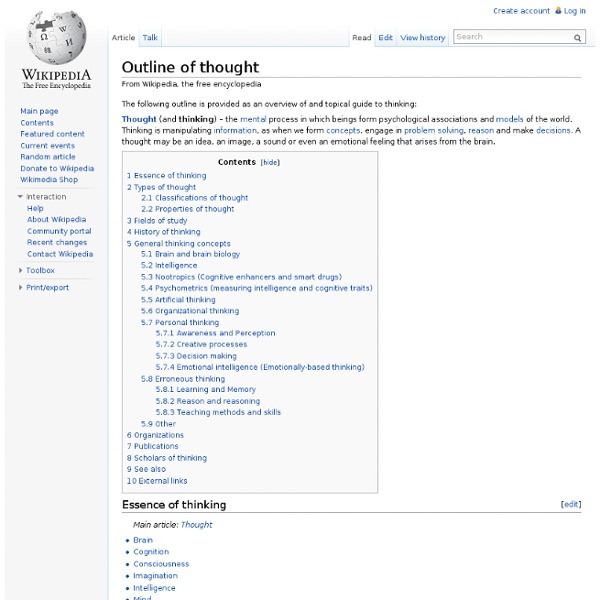List of creative thought processes

thinking skills
There is no logic in connecting an office copier with 'nose'. That is to say, there is no 'logic' in our normal undertanding of logic. This understanding is based on passive surface information systems. There is, however, the logic of active surface information systems, and that is the logic of a patterning system. In such a system, the putting together of 'copier' with the random input 'nose' is perfectly logical. At the same time, the juxtaposition is a logic of action. JUXTAPOSITIONAs many readers will know, the random juxtaposition is one of the many tools of lateral thinking. • What has smell to do with a copier? Smell is a sensation. • What could smell be used for? When copiers run out of paper or toner, there is usually a light signal - perhaps a red light. SMELL SIGNALWhat about a 'smell signal'? There could be different smells for different things. MOVEMENTThe above example illustrates the process of 'movement', which can be practised until a skill is built up in this operation.
Making Good Lessons Great: Incorporating Multiple Iintelligences and Creative Thinking into Everyday Lesson Plans « clearings
by Betty K. Wood and Andrew L. Hunt, University of Arkansas at Little Rock Sarah C. Wood-Jenkins, Ball State University I didn’t find anything very revolutionary here except this quote which I shall bear in mind (lay-out is mine): ‘One model for teaching the skill of creative thinking involves: fluency flexibility originalityelaboration‘ “The following linear representation of a problem-solving thought process, developed by Puccio, Murdock, and Mance (2005), provides an excellent example of how characteristics and behaviors of Critical Thinking and Creative Thinking operate.” Source: Like this: Like Loading...
Critical and Creative Thinking - home
InnovationTools.com: The world's largest and most trusted innovation website
Nuovo e Utile - Teorie e pratiche della creatività - Problem solving
Le immagini e le parole che scandiscono il nostro tempo Un corso professionale online per imparare tutto sulla fotografia, dagli aspetti tecnici a quelli di composizione, alle luci. Puoi discutere ciascuna lezione nel forum, frequentatissimo. Tecnico-divulgativo, in inglese. Le 100 immagini e parole più usate dalle agenzie di notizie più influenti nel mondo, ogni ora, incapsulate in un quadrato 10 x 10. Mille strumenti per l’impresa e i manager Il sito ha una grafica da mercatino delle pulci. Bluegrass Abbraccia le cattive idee (c’è sempre tempo per buttarle via). Emma Coats “Semplifica. Indiewire Tra gli oltre 1000 film festival del pianeta, pochi hanno un impatto effettivo sull'industria cinematografica e solo 50, per originalità, bellezza della location, successo di pubblico sono gli imperdibili. Dove cerco le notizie? Un documento prezioso (di qualche anno fa, non fate ironia quando parla in certi termini di Internet) per gli aspiranti giornalisti: 50 posti dove trovare una storia.
Related:
Related:



